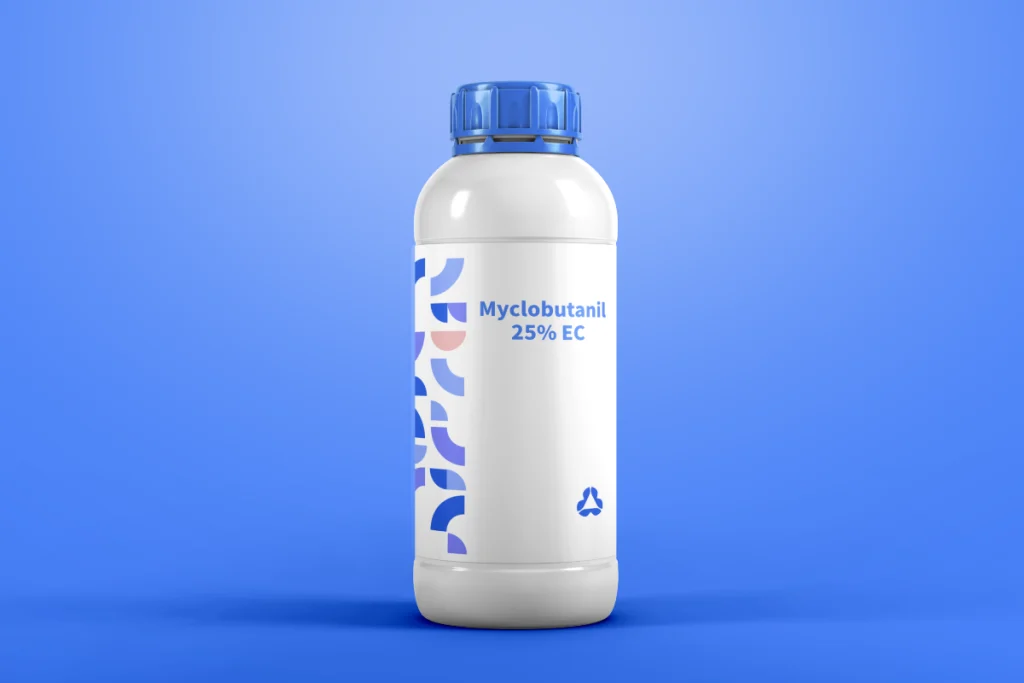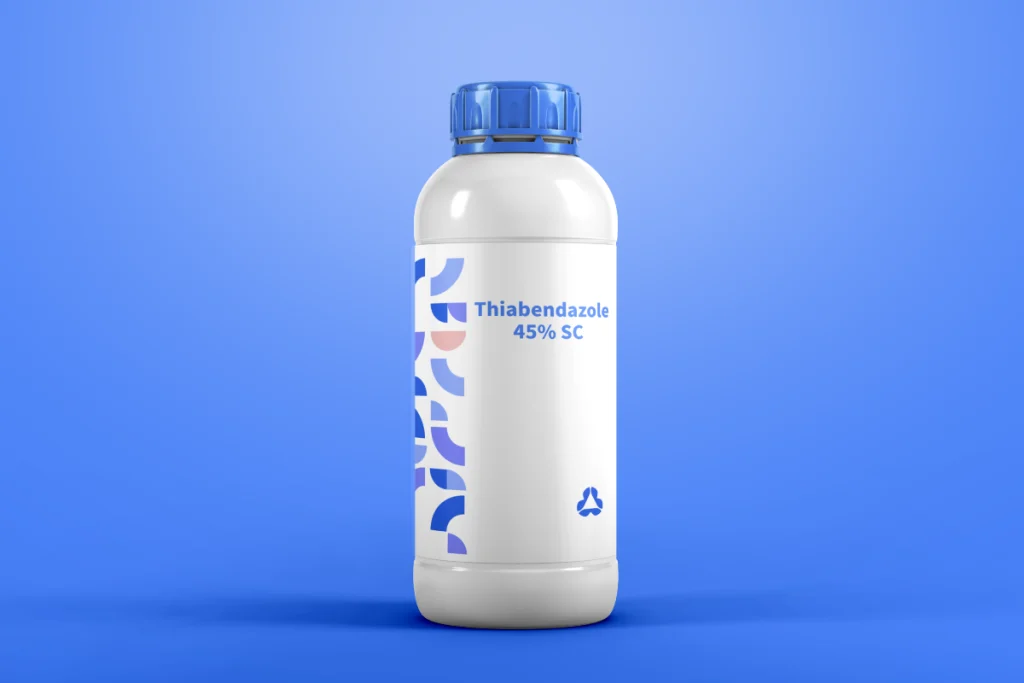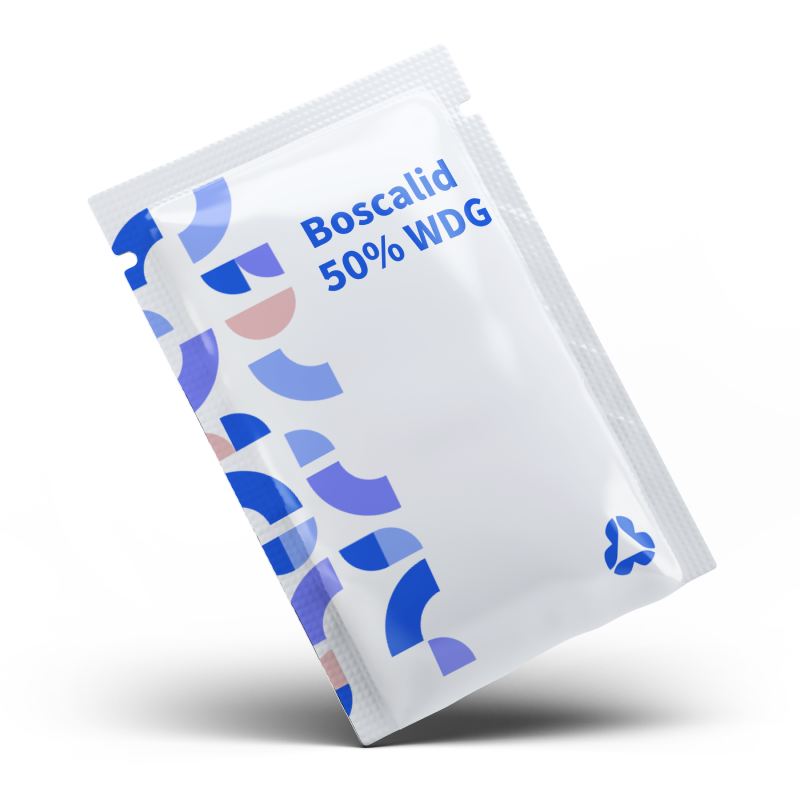- Mechanism: Inhibits oxidative processes in fungal cells, disrupting spore germination and metabolic functions.
- Action Type: Multi-site contact activity; forms a protective barrier on plant surfaces (no systemic movement).
- Key Benefit: Reduces resistance risk due to its multi-target mode of action.
| Crops |
Target Diseases |
Application Rate |
Timing & Guidelines |
| Potatoes |
Early/late blight, leaf spot |
400–600x dilution |
Apply at first sign of disease; repeat every 7–10 days. |
| Tomatoes |
Early/late blight, anthracnose, leaf mold |
400–600x dilution |
Start at disease onset; spray every 7–14 days. |
| Grapes |
Downy mildew, black rot |
200–300x dilution |
Begin at bud burst; continue until grape color change. |
| Citrus |
Anthracnose, black spot, brown rot |
400–600x dilution |
Apply during high humidity; reapply as needed. |
| Cucurbits |
Downy mildew, anthracnose, Alternaria blight |
400–600x dilution |
Spray at first symptoms; repeat every 7–14 days in wet weather. |
- Common Formulations:
- Wettable Powder (WP): 80% WP
- Water Dispersible Granules (WG): 75% WG
- Application Method: Foliar spray (ensure uniform coverage).
- Mixing: Compatible with most fungicides/insecticides, but avoid alkaline or copper-based products.
- Broad-Spectrum Efficacy: Controls ascomycetes, basidiomycetes, and oomycetes (e.g., Phytophthora, Alternaria).
- Nutrient Enrichment: Contains manganese (Mn) and zinc (Zn) to support crop health and vigor.
- Resistance Management: Ideal for rotation with systemic fungicides to delay resistance.
- Safety Profile: Low toxicity to mammals; moderate risk to aquatic life (avoid water source contamination).
- Pre-Harvest Interval (PHI): 7–14 days (crop-specific; follow label).
- Protective Gear: Wear gloves, goggles, and respiratory protection during application.
- Storage: Store in cool, dry conditions; protect from moisture and direct sunlight.
- Environmental Notes: Toxic to fish; avoid runoff into rivers/lakes.
- Small Scale: 1kg/bag, 5kg/bag, 1L/bottle
- Bulk: 25kg/drum, 200L containers, 1000L IBCs
- Custom Solutions: OEM/ODM services for labeling and formulations.
FAQ
Mancozeb is a non – systemic, protective fungicide belonging to the dithiocarbamate family. Its chemical formula is (C₄H₆MnN₂S₄)ₓ(Zn)ᵧ. It inhibits oxidative processes in fungal cells. By interfering with multiple enzyme systems that contain sulphydryl groups, it disrupts spore germination and various metabolic functions within the fungal cell cytoplasm and mitochondria. This action creates a multi – site contact effect, forming a protective barrier on plant surfaces to prevent fungal infection. Since it acts on multiple sites in the fungal cells, it has a relatively low risk of resistance development in fungi.
It has broad – spectrum efficacy against a wide range of fungal pathogens. In vegetable crops, it controls early and late blight, septoria leaf spot in tomatoes and potatoes; downy mildew and anthracnose in cucurbits (like cucumbers and melons); downy mildew and leaf spots in onions and garlic. For fruit crops, it prevents apple scab and rust in apples and pears, downy mildew, black rot, and phomopsis in grapes, and is used to manage black sigatoka and other leaf spot diseases in bananas. In field crops, it protects wheat and barley from rusts and leaf spots, and is effective against soybean rust and other fungal pathogens in soybeans. In ornamentals, it controls black spot, rust, and other fungal diseases in roses and ornamental shrubs, and helps prevent dollar spot, rust, and brown patch in lawns and turf.
Mancozeb is suitable for a vast number of crops. This includes vegetable crops such as tomatoes, potatoes, cucumbers, melons, onions, and garlic. In the fruit category, it can be applied to apples, pears, grapes, bananas, and citrus. Field crops like wheat, barley, and soybeans also benefit from its use. Additionally, it is used on ornamentals such as roses, ornamental shrubs, and lawns. It is also used as a seed treatment for crops like cotton, potatoes, corn, safflower, sorghum, peanuts, tomatoes, flax, and cereal grains.
The common formulations are Wettable Powder (WP), such as 80% WP, and Water Dispersible Granules (WG), like 75% WG. There are also other available formulations in the market, including Suspension Concentrate (SC) like 30% SC. These formulations are designed to be easily mixed with water for foliar spray applications to ensure uniform coverage of the plant surfaces.
The most common application method is foliar spray. Mancozeb should be mixed with water according to the recommended dosage, which is generally 2 – 3 grams per liter of water, though this can vary depending on the crop and the severity of the disease. It should be applied every 7 – 14 days, especially during periods of high humidity or when disease pressure is high. After heavy rainfalls, re – application may be necessary as the protective layer on the plant can be washed away. In some cases, though less frequently, it can also be applied to the soil to protect the roots from fungal infections.
Mancozeb has good compatibility and can be mixed with most fungicides and insecticides. However, it should not be mixed with alkaline or copper – based products. Alkaline substances can cause the decomposition of Mancozeb, reducing its efficacy. Mixing with copper – based products may also lead to chemical reactions that affect the performance of the fungicide. Additionally, when mixing with other pesticides, it is important to check for any potential physical incompatibilities, such as the formation of precipitates.
For humans: Mancozeb has a very low acute toxicity to mammals. However, major routes of exposure are through the skin or inhalation. In spray or dust forms, it and its degradation product ethylene thiourea (ETU) are moderately irritating to the skin and respiratory mucous membranes. Symptoms of exposure may include itching, scratchy throat, sneezing, coughing, inflammation of the nose or throat, and bronchitis. To reduce these risks, proper application techniques should be used, and appropriate personal protective equipment, such as gloves, goggles, and respiratory protection, should be worn during application.
For the environment: Mancozeb is slightly toxic to birds on an acute basis. It and ETU are highly toxic to freshwater fish, and ETU is moderately toxic to aquatic invertebrates. It should not be allowed to contaminate water bodies. Since it binds tightly to soil and is rapidly hydrolyzed, efforts should be made to prevent runoff into water sources. Also, over – application can disrupt soil microorganisms, which are important for healthy plant growth.
For plants: Excessive application can lead to phytotoxicity, especially in sensitive plant varieties. Symptoms may include leaf burn, yellowing, or stunted growth.
The pre – harvest interval varies by crop but generally ranges from 7 – 14 days. It is crucial to follow the label instructions carefully for each specific crop to ensure that residue levels on harvested products are within the acceptable limits and comply with food safety regulations. This helps to prevent excessive Mancozeb residues from entering the food chain.
As a multi – site fungicide (categorized as mode – of – action group M by the Fungicide Resistance Action Committee), Mancozeb has a low risk of resistance development on its own. However, to further manage resistance, it is often tank – mixed with single – site fungicides. Single – site fungicides target a specific enzyme or process in the fungal cell, and pathogens can more easily develop resistance to them. By combining Mancozeb with single – site fungicides, a broader range of fungal physiological processes are targeted, which helps to delay the development of resistance in fungal populations.
In many organic farming standards, Mancozeb is not permitted as it is a synthetic chemical fungicide. Organic farming typically emphasizes the use of natural, non – synthetic methods for pest and disease control. However, some organic systems may allow the use of certain copper – based or sulfur – based fungicides as alternatives, which have different modes of action and environmental impacts compared to Mancozeb. It is always essential to check the specific organic certification requirements in your region.
Mancozeb should be stored in cool, dry conditions. It should be protected from moisture as humidity can cause the product to degrade. Direct sunlight should also be avoided as it can affect the stability of the fungicide. Keep it in its original container, away from food, water, and heat sources. Proper storage not only helps to maintain the efficacy of Mancozeb but also ensures safety, as improper storage conditions could potentially lead to chemical reactions or spills.
Signs of phytotoxicity include leaf burn, where the leaf tissue shows brown, scorched – looking areas. Yellowing of the leaves, also known as chlorosis, can occur, indicating a disruption in the plant’s normal physiological processes. Stunted growth is another sign, where the plant does not grow to its expected size or rate. These symptoms are more likely to occur in sensitive plant varieties or when Mancozeb is applied at excessive rates, in high temperatures, or under strong sunlight.




